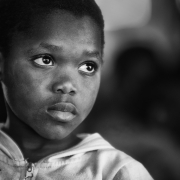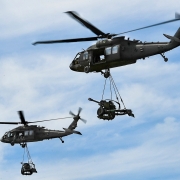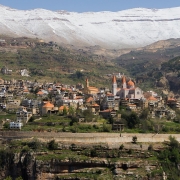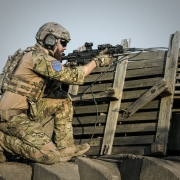What happened during the Rwandan Genocide?
Topic of Study [For H2 History Students]:
Paper 1: Safeguarding International Peace and Security
Section B: Essay Writing
Theme III Chapter 2: Political Effectiveness of the UN in maintaining international peace and security
What happened in Rwanda?
In April 1994, a civil war broke out in Rwanda (located in Central and East Africa), in which the Hutus engaged in the mass slaughter of the Tutsis. Within a span of 100 days, the number of Rwandans killed was estimated to be at 800,000. In general, the United Nations operation in Rwanda was perceived to be a failure as it could not prevent the genocide from taking place.
In the next part below, we will examine the key roles to understand the developments in Rwanda as well as the role of the United Nations.
1. [Belgium] A brewing conflict in Rwanda
In the past, Rwanda was under Belgian colonial rule. The Belgians granted the Tutsi aristocratic minority power, which in turn positioned the Hutu majority as a seemingly-lower social class. As such, the growing class division led to rising ethnic tensions between the two groups.
In 1961, Belgium granted the Rwandan colony independence, followed by the outbreak of ethnic violence between the Hutus and Tutsis. The Hutus gained political power, as seen by the ascension of the Hutu president, Juvénal Habyarimana (1973-1994). On the other hand, the exiled Tutsis formed the Rwandan Patriotic Front (RPF) to demand political concessions from the Habyarimana administration, particularly the ‘second-class’ status.
Contrary to the Tutsis’ expectations, the Hutus perceived them as serious threats to social and political stability. Thus, the Rwandan Civil War began. On 2 Oct 1990, the RPF engaged in a war against the government. Although both parties were willing to hold a ceasefire, as seen by the signing of the Arusha Accords in Aug 1993, the peace was short-lived.
2. [United Nations] Humanitarian Responses
In Jun 1993, the UN deployed the UN Observer Mission Uganda-Rwanda (UNOMUR), which cooperated with the Organization of African Unity (OAU). The UNOMUR’s aim was the oversee the implementation of the 1993 Arusha Accords.
More importantly, the UN Security Council passed Resolution 872 on 5 Oct 1993. The UN Assistance Mission Rwanda (UNAMIR) was deployed. The UNAMIR’s mandate included the monitoring of the Arusha Accords, demobilization of aggressors, overseeing elections and the providing humanitarian aid to the displaced refugees in Rwanda.
Unfortunately, the UN was hampered by the lack of troops (partially due to the Somalia incident). Notably, the UN took five months to organise its troops and form the authorised strength.
3. [Hutu Government] The Genocide begins
In 1994, the Habyarimana government ignored the UN’s efforts and conducted the mass slaughter of Tutsis. The Hutus stood by the justification that the killings were to prevent the enslavement of the Hutu people as the Tutsi aristocrats may resurface if left unchecked.
To make matters worse, the Hutus blamed the Tutsis for the death of Habyarimana on 7 Apr 1994. Although an interim government was formed, it failed to stem the tide of the massacre. Additionally, the RPF (Tutsis) continued to challenge the government, worsening the refugee problem.
4. [United Nations] Last ditch attempts
In view of this complex conflict, the UNAMIR was unable to facilitate a ceasefire. Growing frustrated by the lack of progress and the threatened UN troops, the UN Security Council passed Resolution 912, which diminished the size of the UNAMIR from 2548 to 270.
Finally, the UN Security Council tried to salvage the situation by passing Resolution 929, which led to the start of ‘Operation Turquoise’. It was a multinational operation led by France to provide humanitarian protection for the refugees in Rwanda. Again, the UN was too slow in its response.
What was the outcome?
By Oct 1994, nearly 1 million people were killed. Also, 2 million people were displaced from their homes. Eventually, the killings ceased only when the RPF took over Rwanda and formed a new government.
What can we learn from this case study?
Consider the following questions to understand the case study better:
– What are the obstacles that hindered the UNAMIR?
– How far do you agree that the lack of political will was the main reason for the failure of the UN operations in Rwanda? [to be discussed in class]
The H2 and H1 History Tuition feature online discussion and writing practices to enhance your knowledge application skills. Get useful study notes and clarify your doubts on the subject with the tutor. You can also follow our Telegram Channel to get useful updates.
We have other JC tuition classes, such as JC Math Tuition and JC Chemistry Tuition. For Secondary Tuition, we provide Secondary English Tuition, Secondary Math tuition, Secondary Chemistry Tuition, Social Studies Tuition, Geography, History Tuition and Secondary Economics Tuition. For Primary Tuition, we have Primary English, Math and Science Tuition. Call 9658 5789 to find out more.





